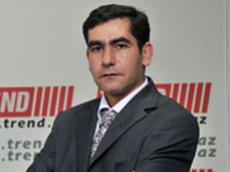|
|
TODAY.AZ / World news
Situation around Iran's nuclear program-what is next?
23 February 2012 [12:46] - TODAY.AZ
 Two rounds of negotiation in a month between Iran and the International Atomic Energy Agency(IAEA) led to nothing, because Iran who had announced the IAEA delegation had not planned to inspect nuclear facilities, were confronted whilst visiting the Parchin Military Complex at their request.
Two rounds of negotiation in a month between Iran and the International Atomic Energy Agency(IAEA) led to nothing, because Iran who had announced the IAEA delegation had not planned to inspect nuclear facilities, were confronted whilst visiting the Parchin Military Complex at their request.Parchin, of course is not a new matter, In June 2004, the IAEA wanted Tehran to allow inspectors to see this military complex that lies 30 kilometres southeast of Tehran.
This giant complex consists of several army research centres, where it develops and produces ammunition, missiles, and high explosives.
Recently in November 2011, IAEA Chief Yukia Amano said during a report that he suspected that Parchin was the site where explosives relate to nuclear weapons being tested in recent years.
Mr Amano reported that Iran built a large, cylindrical chamber at Parchin in 2000 that was designed to contain the force of up to 70 kg of high explosives.
In 2004, rumours arose around this subject that Iran has been conducting secret experiments involving 'high-explosive shaped charges with an inert core of depleted uranium' (uranium from which most of the fissile isotope uranium-235 has been removed) to test the characteristics of an implosion type nuclear weapon.
Iran denied the allegations, but allowed the IAEA to inspect there twice in 2005. IAEA reported in February 2006 that inspectors 'did not observe any unusual activities in the buildings visited', and that 'environmental samples did not indicate the presence of nuclear material.'
However, despite 2006, Iran refused to allow the IAEA inspect Parchin this time. Why?
Amano's latest report claims that there is some evidence indicating that Iran has built a large steel container for testing high explosives applicable to the development of nuclear arms.
Suppose Iran has tested high explosives applicable in that container. it could have had enough time to replace that container with a new one easily, but did not.
With regard Iran's latest nuclear achievements announced last week, especially building a new generation of centrifuge with carbon fibre rotors to process uranium enrichment more quickly, transferring two cascades with 174-centrifuge each from Natanz to Fordo enrichment site and producing 100 kg of 20 per cent enriched uranium, etc., it's seems that Iran has decided to keep its nuclear activities without compromising.
The international community demands Iran halts its uranium enrichment programme which can lead to produce core for a large nuclear warhead, but to ccept Additional Protocol of the Non-Proliferation Treaty. According this protocol, IAEA inspectors can visit any nuclear facility in Iran whenever they want.
Iran seems it will never abandon its uranium enrichment programme which is the international community's major concern and until this uranium enrichment right is accepted by the West countries in the framework of the NPT, negotiations on other issues such as Parchin case will be failed.
Reading Iran's proposal packet for the 5+1 group including Russia, China, Britain, France, the United States and Germany, the country wants to only talk about Middle East security, changing the way of administrating and establishing justice in the world and these sorts of issues, not more, are actually a vicious circle.
Dalga Khatinoglu /Trend/
URL: http://www.today.az/news/regions/103023.html
 Print version
Print version
Views: 4084
Connect with us. Get latest news and updates.
See Also
- 06 August 2025 [23:25]
Lego releases set featuring rare Bugatti - 06 August 2025 [22:27]
US aims to boost air and missile defense capabilities - 06 August 2025 [21:21]
Beaches worldwide face extinction - 06 August 2025 [20:46]
S. Korea and U.S. advance tech for nuclear fusion stability - 06 August 2025 [09:00]
Google considers buying Korean satellite images with blurred sensitive sites - 06 August 2025 [08:00]
ChatGPT encourages users to take breaks from AI - 05 August 2025 [21:50]
Japan and South Korea hit record-breaking heat wave - 05 August 2025 [21:23]
ExxonMobil to resume Libya operations after 10 years - 05 August 2025 [20:21]
Apple and Synchrony unveil groundbreaking neural interface - 05 August 2025 [19:36]
Sweden prepares for major shift in energy policy
Most Popular
 Kazakhstan is betting on Baku-Tbilisi-Ceyhan
Kazakhstan is betting on Baku-Tbilisi-Ceyhan
 New details surface about Washington meeting between Baku and Yerevan
New details surface about Washington meeting between Baku and Yerevan
 Ukraine prepares for Erdogan’s visit amid push to ratify free trade agreement
Ukraine prepares for Erdogan’s visit amid push to ratify free trade agreement
 Baku, Yerevan set for Washington talks amid hopes for imminent peace deal
Baku, Yerevan set for Washington talks amid hopes for imminent peace deal
 Turkish business delegation explores investment potential in Alat Free Economic Zone
Turkish business delegation explores investment potential in Alat Free Economic Zone
 Turkish, Azerbaijani FMs discuss bilateral ties and regional cooperation
Turkish, Azerbaijani FMs discuss bilateral ties and regional cooperation
 Victims of Armenian missile attacks recount suffering during Patriotic War
Victims of Armenian missile attacks recount suffering during Patriotic War
